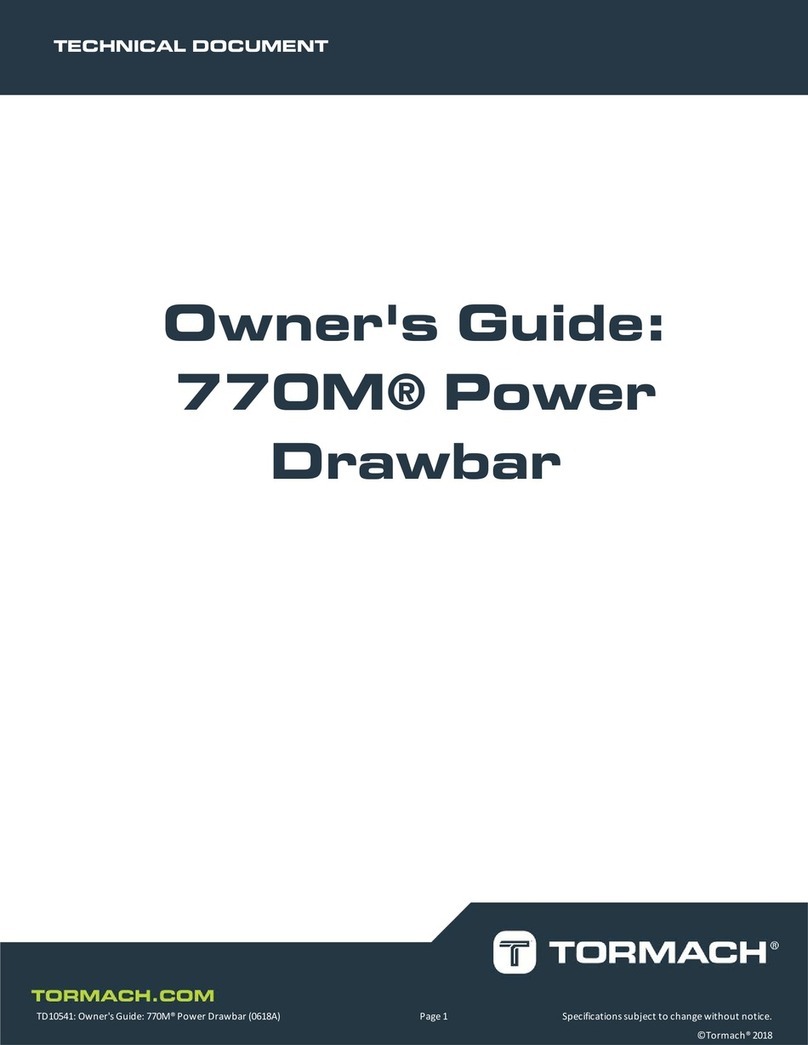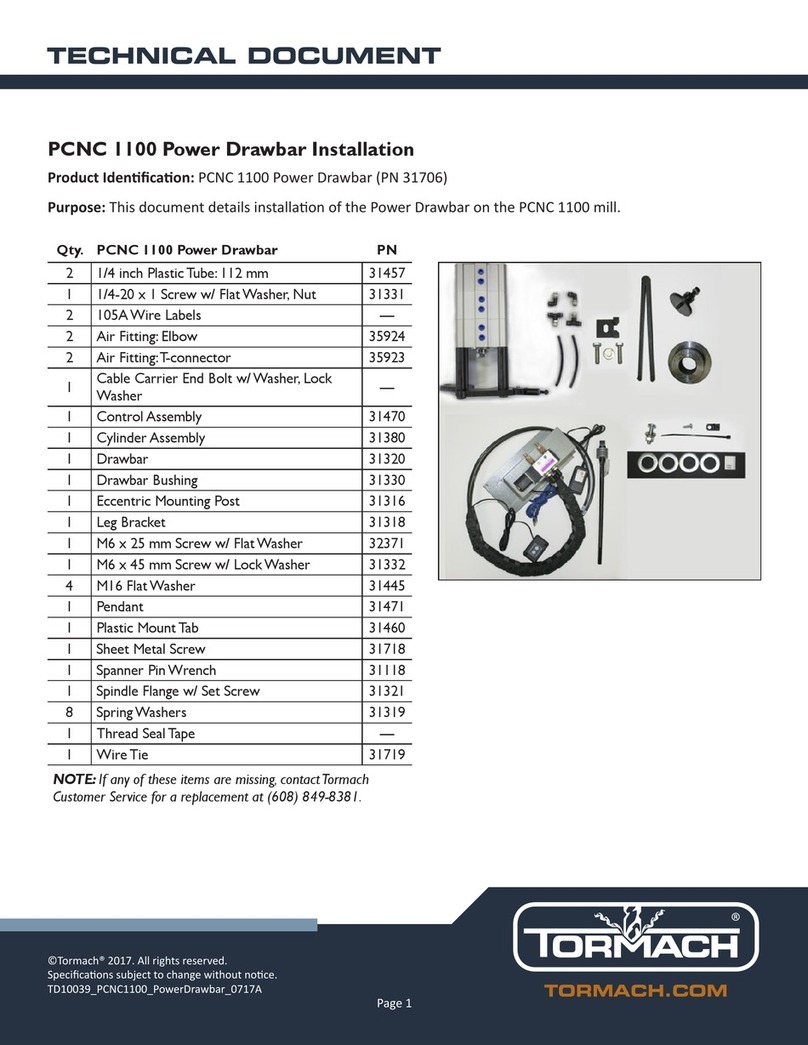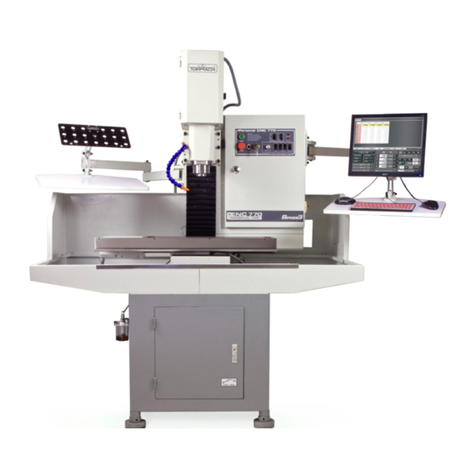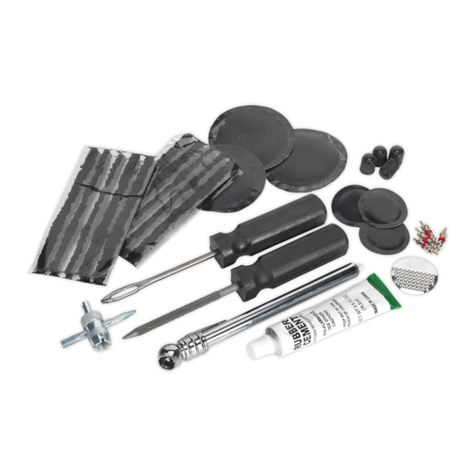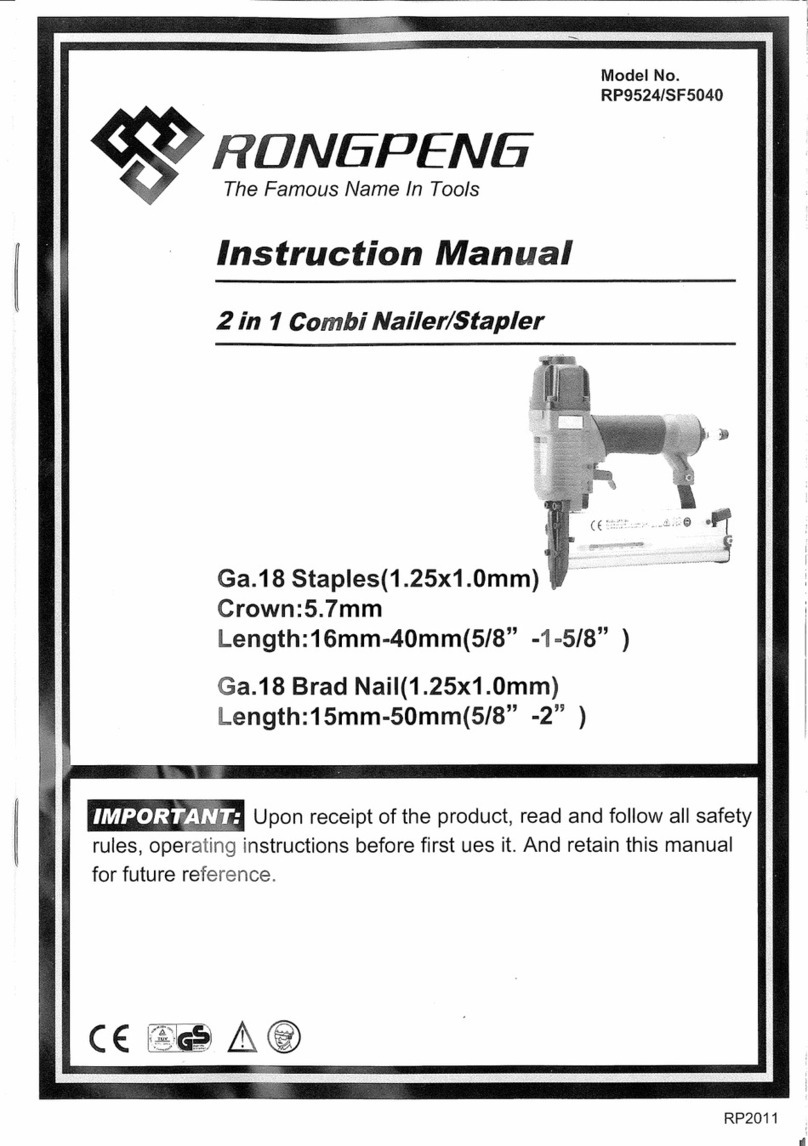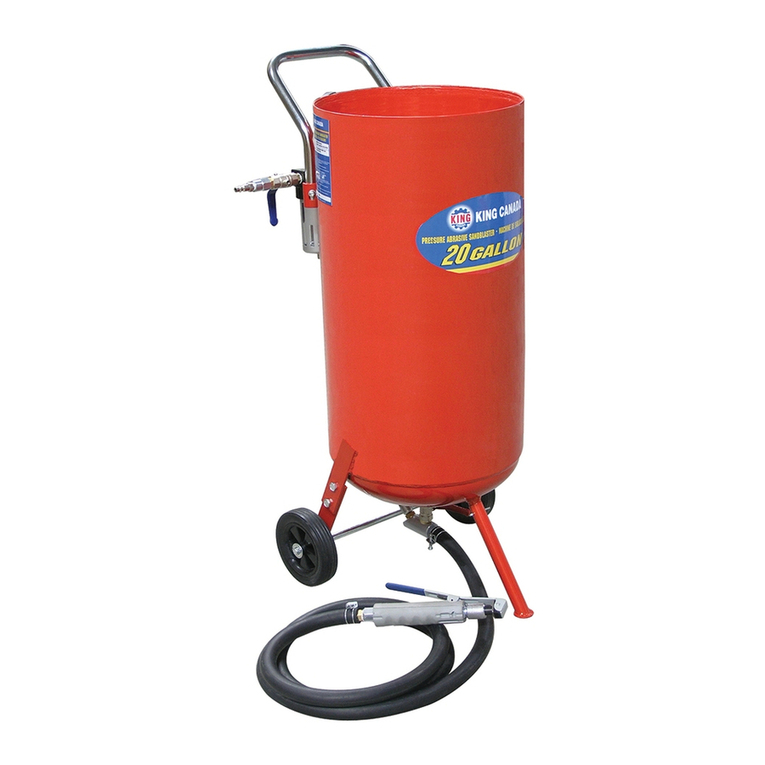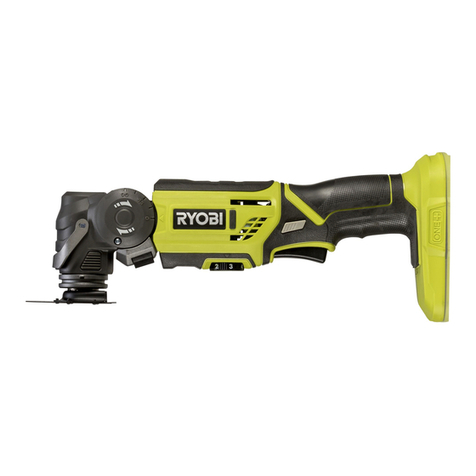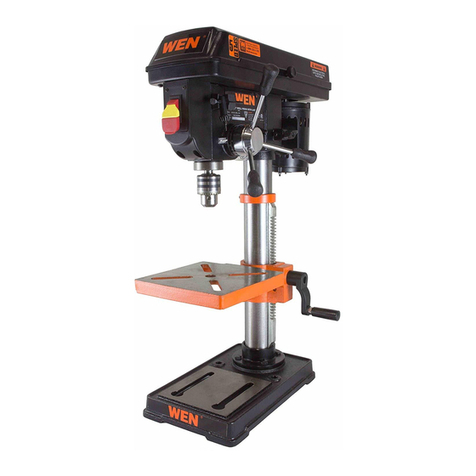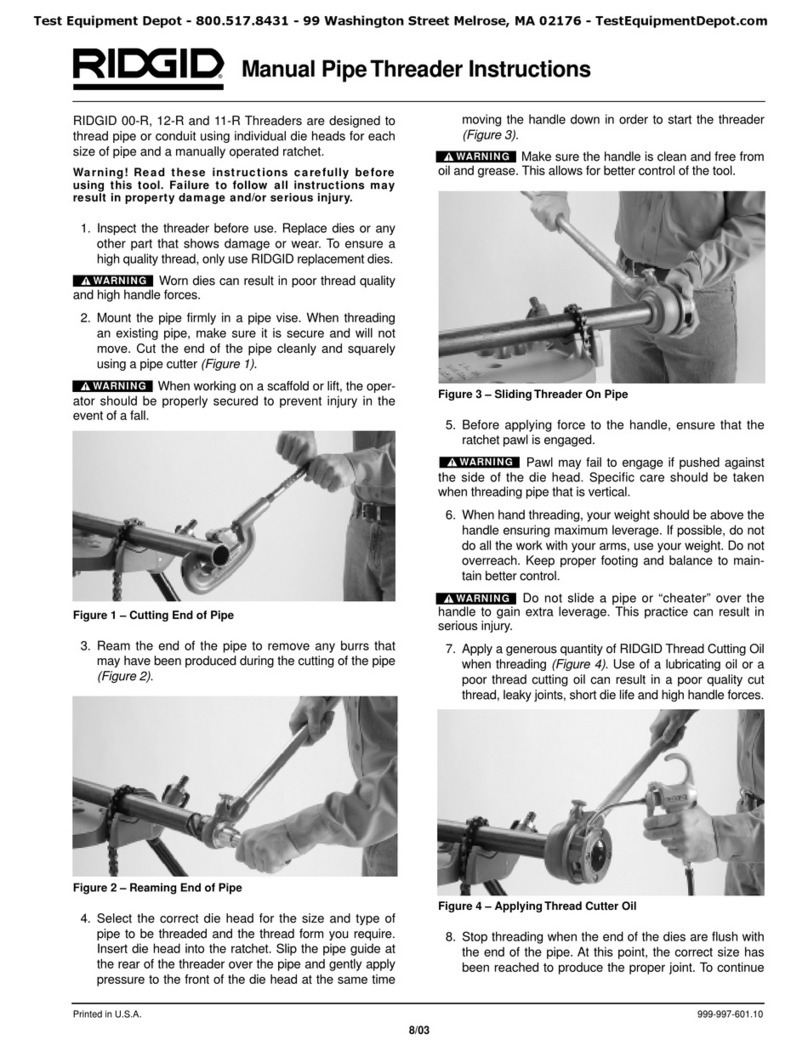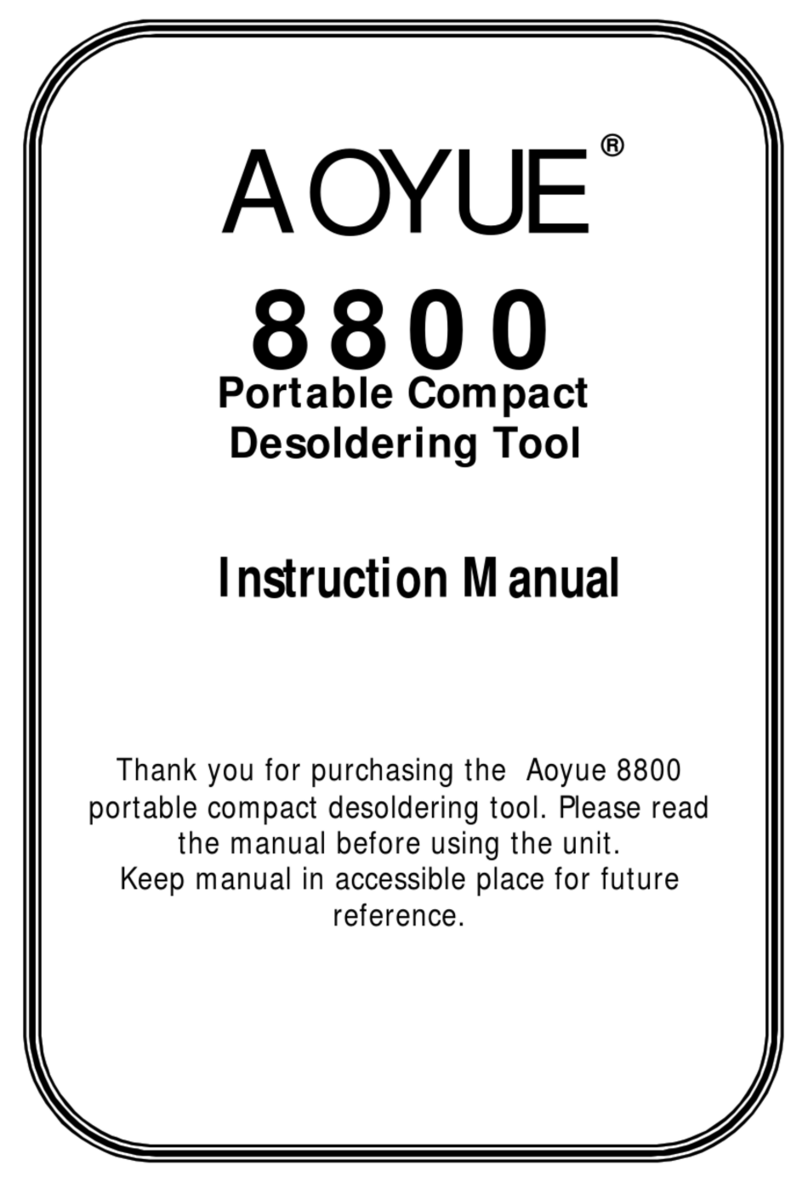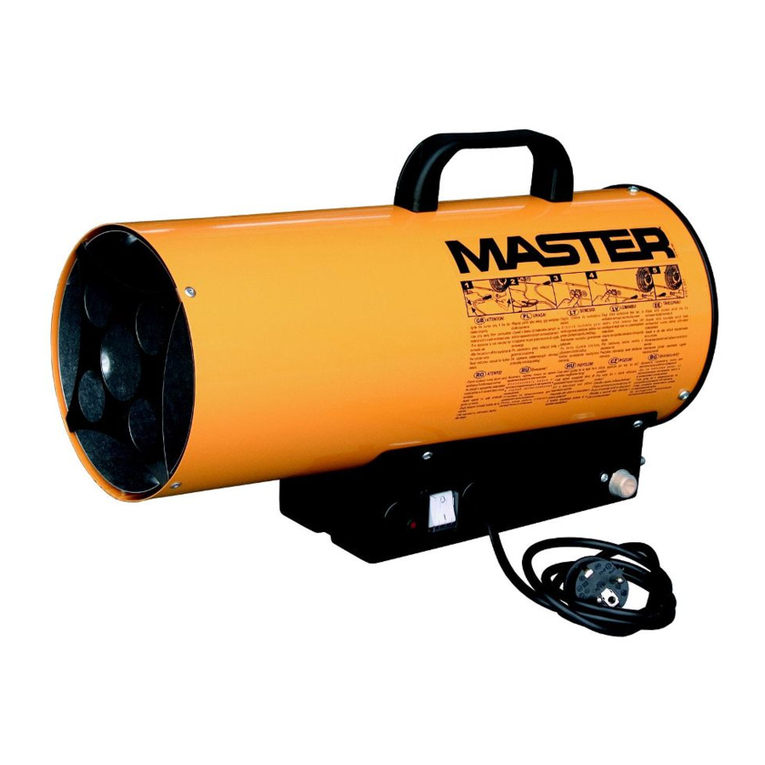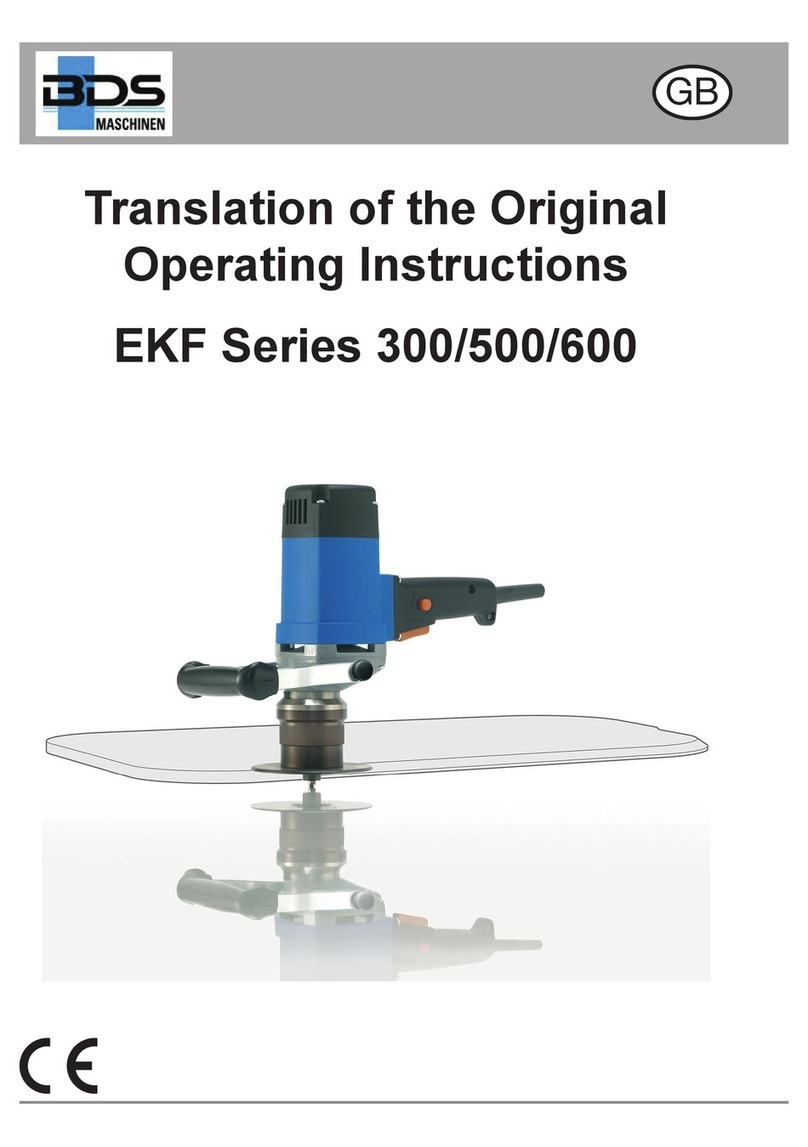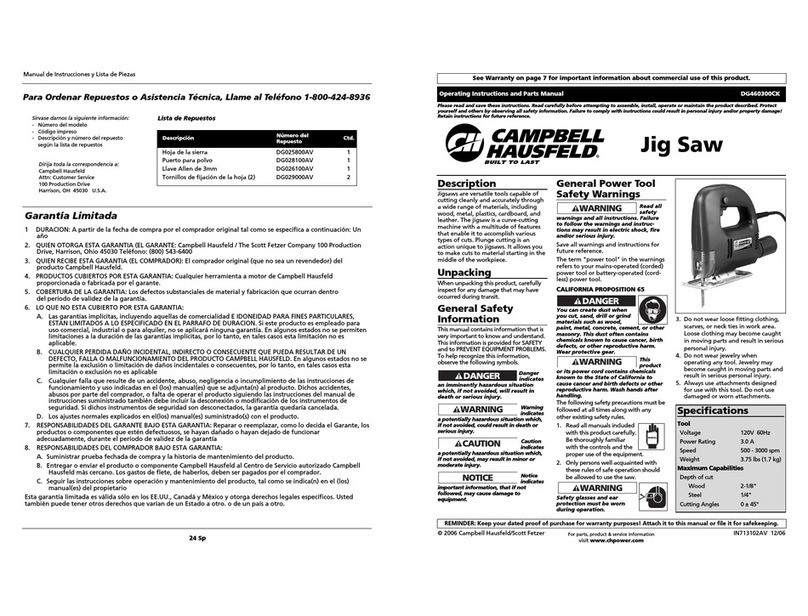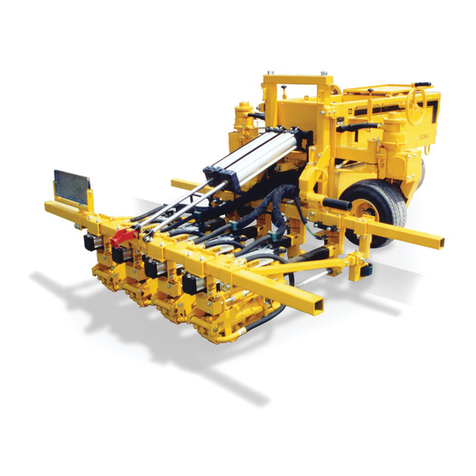Tormach 4th Axis User manual

TECHNICAL DOCUMENT Version 0919A
OWNER'S GUIDE
4TH AXIS
Page 1

2.1 SETUP
Complete the following steps in the order listed:
2.1.1 Before You Begin 2
2.1.2 Unpack the 4th Axis 4
2.1.3 Install the 4th Axis 4
2.1.1 Before You Begin
NOTICE! Before you begin to operate the 4th Axis, you must
make sure that the rotary table is lubricated and adjusted for
backlash.
Complete the following steps in the order listed:
Required Tools 2
Lubricate the Rotary Table 2
Adjust the Backlash 3
Required Tools
This procedure requires the following tools. Collect them before you
begin.
l#2 Phillips screwdriver
lDead-blow hammer (or similar)
lMagnetic dial indicator
lNewspaper (or similar)
Lubricate the Rotary Table
NOTICE! Never operate the 4th Axis without lubrication.
Operating the 4th Axis without lubrication may void your
warranty.
The rotary table is shipped without oil. Before operating, you must
fill the rotary table with oil. Only use AGMA 2 gear oil or SAE 30
weight motor oil. Do not use way oil.
Note: After the rotary table is filled with oil, you must
allow it to drain the excess oil, which may take up to two
days. You may use the 4th Axis while it drains.
1. Identify the oil fittings on the rotary table.
OIL POINT OIL PLUG
OIL SIGHT
GLASS
OIL POINT
Figure 2-1: Oil fittings on a standard rotary table.
OIL POINT
OIL POINT
OIL POINT
OIL POINT
OIL POINTS
Figure 2-2: Oil fittings on a tilting rotary table.
OIL POINTS OIL POINTS
Figure 2-3: Oil fittings on a super spacer rotary table.
2. On the standard rotary tables (6-in. Rotary Table or 8-in.
Rotary Table), identify the oil reservoir.
3. Use a trigger-style oil can to fill the oil fittings: Insert the tip
of the oil can into each fitting, and pump in oil until you can
feel back pressure.
4. On the standard rotary tables (6-in. Rotary Table or 8-in.
Rotary Table), fill the oil reservoir until the oil begins to leak
out at the bottom of the table. If the If the oil reservoir is
over-filled, it slowly leaks out until it reaches the correct level.
Page 2
©Tormach® 2019
Specifications subject to change without notice.
tormach.com
TD10552: Owner's Guide: 4th Axis (0919A)
TECHNICAL DOCUMENT

5. Put the rotary table on a stack of newspaper (or similar) to
allow it to drain the excess oil.
Adjust the Backlash
NOTICE! You must complete the steps in this procedure to
adjust the backlash. If you do not adjust the backlash, it could
result in premature wear on the rotary table.
To Set the Backlash by Positioning the Backlash Adjustment
Screw
1. Identify the backlash adjustment screw: Remove the
protective cover screw on top of it, or loosen a jam nut.
Figure 2-4: Backlash adjustment screw on a standard
rotary table.
Figure 2-5: Backlash adjustment screw on a tilting rotary
table.
Figure 2-6: Backlash adjustment screw on a super spacer
rotary table.
2. Loosen the backlash adjustment screw six turns
counterclockwise.
3. Disengage the eccentric lock and clamp handles.
4. Engage the worm gear: Rotate it completely
(counterclockwise on standard and tilting rotary tables;
clockwise on super spacer rotary tables).
5. Verify that the rotary table does not turn. It doesn't turn when
the motor is engaged.
6. Use one hand to put counterclockwise pressure on the motor
(clockwise on super spacer rotary tables), and slowly tighten
the set screw until you feel resistance to the pressure you're
applying.
Tip! Move slowly — the resistance could be
subtle.
The set screw is just against the worm drive.
7. Tighten the set screw a quarter-turn. The motor rotates
slightly, and creates a gap (for an oil film) between table and
worm gear.
8. Replace the protective cover screw.
To Set the Backlash by the Numbers
Adjust for a minimum backlash of 30 arc-seconds. Measured
at the outer circumference of an 8-in. diameter circle with a
dial indicator, 30 arc-seconds will be 0.0006 in. of lost motion.
Setting the backlash to 60 arc-seconds will sustain a thicker oil film,
yielding lower friction and longer life. Measured at the outer
circumference of an 8-in. diameter circle with a dial indicator, 60
arc-seconds is 0.0012 in. of lost motion.
We do not recommend setting the backlash greater than 90 arc-
seconds (1.5 arc-minutes). It won't improve the life of the
mechanism, and could result in chatter during machine operations.
Page 3
©Tormach® 2019
Specifications subject to change without notice.
tormach.com
TD10552: Owner's Guide: 4th Axis (0919A)
TECHNICAL DOCUMENT

2.1.2 Unpack the 4th Axis
1. Inspect the item(s):
lPhotograph any damage that may have occurred during
shipping.
lNote any damage on the delivery receipt before signing for
the shipment.
lVerify the received goods against the packing list.
If there is any damage or shortages, you must contact
Tormach within 30 days of receipt. Email
support@tormach.com to contact Tormach Technical Support
for guidance on how to proceed.
2. Make sure that all loose parts are removed from the package
before discarding any shipping materials.
2.1.3 Install the 4th Axis
Complete the following steps in the order listed:
Mount the Rotary Table
1. Prevent rust from forming on the machine table from trapped
water-based coolants: put a thin film of oil (WD-40® or
similar) on the surfaces.
2. Depending on your rotary table, do one of the following:
l6-in. Rotary Table or 8-in. Rotary Table Put the rotary
table on the left side of the machine table.
l6-in. Super Spacer Rotary Table, 8-in. Super Spacer
Rotary Table, 6-in. Tilting Rotary Table, or 8-in.
Tilting Rotary Table Put the rotary table on the right side
of the machine table.
3. Loosely attach the rotary table toe clamps to the machine
table.
Note: The components are left loose so that you can
adjust the rotary table.
4. Attach a magnetic dial indicator to the spindle head of the
machine.
5. Put the dial indicator on the rotary table so that it will
measure across the platter of the rotary table.
6. Jog the machine from side-to-side in the Y direction to
indicate across the platter.
7. Use a dead blow hammer to tap the rotary table and adjust
its position and reduce any misalignment determined in Step
6.
8. Completely tighten the rotary table toe clamps to secure the
rotary table to the machine table.
Install the A-Axis Motor Driver
WARNING! Electrical Shock Hazard: You must power off
the machine before making any electrical connections. If
you don't, there's a risk of electrocution or shock.
1. Power off the machine and the PathPilot controller.
a. Push in the Emergency Stop button on the operator box,
which removes power to motion control.
b. From the PathPilot interface, select Exit.
c. Turn the Main Disconnect switch to OFF on the side of the
electrical cabinet.
Page 4
©Tormach® 2019
Specifications subject to change without notice.
tormach.com
TD10552: Owner's Guide: 4th Axis (0919A)
TECHNICAL DOCUMENT

2. Set the DIP switches on the motor driver. Depending on your
rotary table, do one of the following:
l6-in. Rotary Table or 6-in. Tilting Rotary Table Set the
dip switches as follows:
Dip Switch Position
8 Off
7 On
6 On
5 Off
4 Off
3 Off
2 On
1 On
l8-in. Rotary Table, 6-in. Super Spacer Rotary Table,
8-in. Super Spacer Rotary Table or 8-in. Tilting
Rotary Table Set the dip switches as follows:
Dip Switch Position
8 Off
7 On
6 On
5 Off
4 Off
3 Off
2 Off
1 On
3. Remove the top, right, and middle (above the DC-BUS board)
wire trough covers in the electrical cabinet.
4. Find the ribbon cable (labeled 423.4) in the top wire trough.
5. Find the green connector and wires in the right wire trough.
6. Install the motor driver in the electrical cabinet with a #2
Phillips screwdriver.
7. Connect the ribbon cable and the power connector into the
motor driver.
8. Find wire 241 and wire 240 in the middle wire trough (above
the DC-BUSboard).
9. Connect the power wire spade connectors to the DC-BUS
board as follows:
a. Connect wire 241 (brown) to A+ terminal
b. Connect wire 240 (blue) to A- terminal
10. Put back the wire trough covers.
Verify the Installation
1. Make sure that all wires on the motor driver and the DC-
BUSboard are completely connected.
2. Replace the wire trough covers.
3. Connect the rotary table to the A-Axis Encoder connector on
the side of the electrical cabinet.
4. Power on the machine and the PathPilot controller.
a. Turn the Main Disconnect switch to ONon the side of the
electrical cabinet.
b. Twist out the Emergency Stop button on the operator box,
which enables movement to the machine axes and the
spindle.
c. Press the Reset button on the operator box.
d. Bring the machine out of reset and reference it.
5. From the PathPilot interface, test the movement of the rotary
table:
lPress COMMA on the keyboard to jog the rotary table in
the -A direction.
lPress PERIOD on the keyboard to jog the rotary table in the
+A direction.
Page 5
©Tormach® 2019
Specifications subject to change without notice.
tormach.com
TD10552: Owner's Guide: 4th Axis (0919A)
TECHNICAL DOCUMENT

3.1 OPERATION
Read the following sections to understand how to operate the 4th
Axis:
l"About the Center Hole" (below)
l"Align the Angle of the Tilt Position" (below)
l"Distribute Wear on the Rotary Table" (below)
l"Lock the Tilt Position" (below)
l"Set a Reference Location" (below)
l"Tighten the Rotary Clamps" (on the next page)
l"Turn the Rotary Table by Hand" (on the next page)
3.1.1 About the Center Hole
The center hole is ground to an MT taper, or a through bore, to fit
workholding. On rotary tables with an MT taper, there is also a
shallow, concentric pilot hole, used to locate a chuck or other
tooling.
Figure 3-1: Center hole.
Make sure that coolant does not enter the moving rotary table
components. If it does, go to "Examine the 4th Axis for Coolant
Resistance" (page11).
3.1.2 Align the Angle of the Tilt Position
Use the vernier scale to align the angle of the 6-in. Tilting
Rotary Table or 8-in. Tilting Rotary Table when moving from
horizontal to vertical.
Figure 3-2: Vernier scale.
Note: It's easier to setup chucks or fixtures while the
rotary table is in the horizontal position, and then
move the rotary table to the vertical position.
3.1.3 Distribute Wear on the Rotary Table
We recommend distributing wear over the whole of the worm gear.
Do the following:
lWhen doing long runs of constant back-and-forth movement,
occasionally reposition the table top and workholding fixture.
lIf the moves are close to 180°, continue rotating in the same
direction to the start point, rather than returning in the
opposite direction.
lProgram the start point to change a few degrees each time (if
the part permits).
3.1.4 Lock the Tilt Position
You must lock the tilt position on the 6-in. Tilting Rotary Table or 8-
in. Tilting Rotary Table before machining. To lock the tilt position:
1. Set the desired tilt of the rotary table.
2. Tighten the two tilt clamps.
The tilt position is locked in place.
3.1.5 Set a Reference Location
To read angles directly off the table:
Loosen the clamp holding the adjustable reference mark in
place, and then move the pointer to an exact degree mark.
Page 6
©Tormach® 2019
Specifications subject to change without notice.
tormach.com
TD10552: Owner's Guide: 4th Axis (0919A)
TECHNICAL DOCUMENT

Figure 3-3: Example of adjusting the reference mark.
3.1.6 Tighten the Rotary Clamps
To keep the table from rotating during heavy milling operations:
Use the clamp handles to tighten the rotary clamps.
To allow the rotary table to rotate freely, make sure that the rotary
clamps are loosened during motorized rotation.
To prevent the rotary table form losing the correct position, make
sure that the rotary clamps are not too tight during a move.
3.1.7 Turn the Rotary Table by Hand
Power is transmitted from the A-axis motor driver to the rotary
table by a worm gear at the end of the drive shaft. The eccentric
lock stops the eccentric sleeve from rotating.
To turn the rotary table by hand, you must disengage the worm
gear. To disengage the worm gear:
1. Loosen the eccentric lock.
2. Rotate the eccentric: Turn the motor mount as far as it will
rotate in the clockwise direction (counterclockwise on super
spacer rotary tables).
3. Tighten the eccentric lock.
The worm gear is disengaged.
To reengage the worm gear:
NOTICE! You must use the eccentric lock before engaging
the worm drive. If you do not, there is a risk that the
motor driver could disengaging during use.
1. Loosen the eccentric lock.
2. Rotate the eccentric: Turn the motor mount as far as it will
rotate in the counterclockwise direction (clockwise on super
spacer rotary tables).
3. Tighten the eccentric lock.
The worm gear is engaged.
4. Make sure that the worm is completely engaged: If necessary,
rotate the rotary table slightly (by hand) to engage the worm
gear in the ring gear.
NOTICE! The worm must be completely engaged. If it's
not, the rotary table will exhibit excessive backlash.
Page 7
©Tormach® 2019
Specifications subject to change without notice.
tormach.com
TD10552: Owner's Guide: 4th Axis (0919A)
TECHNICAL DOCUMENT

4.1 WORKHOLDING REFERENCE
lDirect Mount to Rotary Table 6-in. rotary tables have 10
mm T-slots. 8-in. rotary tables have 12 mm T-slots. Use the T-
slots in combination with T-nuts and a clamp set to hold work
directly to the rotary table.
Alternatively, use bolts and T-nuts to attach a vice or custom
fixture plate to the rotary table.
l2-Jaw Chuck The 2-Jaw Chuck for a 6-in. Table (PN 32627)
provides rapid prototype workholding. The set includes a self-
centering 2-jaw chuck with an adapter plate and mounting
hardware, including jaw plates. The 2-Jaw Chuck for an 8-in.
Table (PN 32622) includes a MT3 adapter ring.
l3-Jaw Chuck Use a 3-Jaw Chuck for 6-in. Table (PN 30292)
or 3-Jaw Chuck for 8-in. Table (PN 30291).
l4-Jaw Chuck Use a 4-Jaw Chuck for 6 in. Table (PN31721) or
4-Jaw Chuck for 8-in. Table (PN30293). Each chuck includes
an adapter plate and pin for mounting the chuck to the table
and centering it to the rotational axis. Each chuck comes with
both inside and outside interchangeable jaw sets.
l5C Collet Adapter A 5C Collet Adapter for 8-in. Table (PN
30294) includes an adaptor plate for mounting and centering
the holder.
l5C Collet Fixture Use the T-slots to mount a 5C Collet
Fixture for 6-in. Rotary Table (PN 31414) or 5C Collet Fixture
for 8-in. Rotary Table (PN 31415).
lMT2 Alignment Kit for ER32 Collet Fixture On 6-in. rotary
tables, use an MT2 Alignment Kit for ER32 Collet Fixture (PN
34382).
lMT3 Alignment Kit for ER32 Collet Fixture On 8-in. rotary
tables, use an MT3 Alignment Kit for ER32 Collet Fixture (PN
34383).
lMT3 Collet and Drawbolt On 8-in. rotary tables, use an MT3
collet, held in with a drawbolt. Use it in combination with a
Tormach Tooling System (TTS) tool holder as a low-cost
method for holding slender bar stock. On 6-in. rotary tables,
use an MT2 collet.
Page 8
©Tormach® 2019
Specifications subject to change without notice.
tormach.com
TD10552: Owner's Guide: 4th Axis (0919A)
TECHNICAL DOCUMENT

5.1 MAINTENANCE
Read the following sections to understand how to maintain the 4th
Axis:
l"Adjust the Backlash" (below)
l"Adjust the Lock Nut" (on the next page)
l"Adjust the Rotary Table" (on the next page)
l"Examine the 4th Axis for Coolant Resistance" (page11)
l"Examine the Locking Lugs" (page11)
l"Examine the Motor Coupling" (page12)
l"Lubricate the Rotary Table" (page13)
5.1.1 Adjust the Backlash
NOTICE! You must complete the steps in this procedure to
adjust the backlash. If you do not adjust the backlash, it could
result in premature wear on the rotary table.
To Set the Backlash by Positioning the Backlash Adjustment
Screw
1. Identify the backlash adjustment screw: Remove the
protective cover screw on top of it, or loosen a jam nut.
Figure 5-1: Backlash adjustment screw on a standard
rotary table.
Figure 5-2: Backlash adjustment screw on a tilting rotary
table.
Figure 5-3: Backlash adjustment screw on a super spacer
rotary table.
2. Loosen the backlash adjustment screw six turns
counterclockwise.
3. Disengage the eccentric lock and clamp handles.
4. Engage the worm gear: Rotate it completely
(counterclockwise on standard and tilting rotary tables;
clockwise on super spacer rotary tables).
5. Verify that the rotary table does not turn. It doesn't turn when
the motor is engaged.
6. Use one hand to put counterclockwise pressure on the motor
(clockwise on super spacer rotary tables), and slowly tighten
the set screw until you feel resistance to the pressure you're
applying.
Tip! Move slowly — the resistance could be
subtle.
The set screw is just against the worm drive.
7. Tighten the set screw a quarter-turn. The motor rotates
slightly, and creates a gap (for an oil film) between table and
worm gear.
8. Replace the protective cover screw.
To Set the Backlash by the Numbers
Adjust for a minimum backlash of 30 arc-seconds. Measured
at the outer circumference of an 8-in. diameter circle with a
dial indicator, 30 arc-seconds will be 0.0006 in. of lost motion.
Setting the backlash to 60 arc-seconds will sustain a thicker oil film,
yielding lower friction and longer life. Measured at the outer
circumference of an 8-in. diameter circle with a dial indicator, 60
arc-seconds is 0.0012 in. of lost motion.
Page 9
©Tormach® 2019
Specifications subject to change without notice.
tormach.com
TD10552: Owner's Guide: 4th Axis (0919A)
TECHNICAL DOCUMENT

We do not recommend setting the backlash greater than 90 arc-
seconds (1.5 arc-minutes). It won't improve the life of the
mechanism, and could result in chatter during machine operations.
About Backlash
Backlash is an important element in managing overall accuracy. On
a rotary table, a number of internal sliding surfaces depend on a
hydrodynamic oil film for low friction and long service life. The
adjustment of clearances between these surfaces helps to achieve
precision and extends service life — much like the adjustment of the
lead screw nut and gibs on a mill or a lathe.
If the backlash is adjusted to zero, the worm screw (and other parts)
are subjected to excessive wear and friction — which may lead to
stalling of the rotary table. As the worm screw turns, the oil shears
off at the gear interface, and provides no film to protect against
metal-to-metal wear.
5.1.2 Adjust the Lock Nut
You must adjust the lock nut to adjust for wear in the worm gear.
1. Loosen the socket head cap screw and the set screw on the
motor coupling. Do not remove the screws.
2. Remove the four mounting screws securing the motor to the
motor mount.
3. Remove the motor — with the coupling still attached — from
the motor mount.
4. Put grease on the back side of the spacer.
5. Use two spanner wrenches to tighten (or loosen) the lock
nuts.
Figure 5-4: Example of tightening the lock nuts with two
spanner wrenches.
6. Adjust the spacer nut so that — when turned by hand — there
is no axial play in the worm shaft, and so that the shaft moves
freely. Do not over-tighten the lock nut.
Figure 5-5: Example of turning the spacer nut by hand.
5.1.3 Adjust the Rotary Table
To test for correct axial adjustment:
1. Disengage the worm.
2. Rotate the table by hand. You should feel a slight drag. If you
do not feel a drag, do the following:
a. Use a flat-head screwdriver to loosen the three screws in
the retaining plate two turns.
b. Use an Adjustable Pin Spanner Wrench (PN 31118) to
tighten or loosen the retaining plate.
Figure 5-6: Retaining plate on the rotary table.
c. Rotate the plate clockwise to increase drag, or
counterclockwise to decrease drag.
5.1.4 Examine the 4th Axis for Coolant Resistance
To make sure that the 4th Axis is resistant to coolant, regularly do
the following:
lUse thread seal tape to seal the set screw on the motor
mount.
Page 10
©Tormach® 2019
Specifications subject to change without notice.
tormach.com
TD10552: Owner's Guide: 4th Axis (0919A)
TECHNICAL DOCUMENT

lPosition the motor so that its cord points down when the
motor is engaged. Depending on the operational position
(horizontal or vertical), you may have to reposition the motor
with respect to the motor mount.
lMake sure that the paint is maintained on the motor body —
in particular, the magnetic laminations in the center.
lExamine the oil view port for a milky fluid or raw coolant.
To remove coolant from the rotary table:
1. Drain the coolant from the rotary table.
2. Refill with one of the following:
lAGMA 2 gear oil
lSAE 30 weight motor oil
About the Rotary Table and Coolant
The rotary table is designed to operate in the presence of coolant,
but not when it's submersed in coolant. It's rarely a problem is
coolant is dripping over the edge. However, it is a problem if there's
a serious external coolant flow that submerses the joint between
the rotating table and the base casting.
The electric motor is sealed against cutting fluids. Do not allow the
following components to be subject to constant coolant flow or
high-pressure coolant jets:
lMotor
lMotor cable
lThe joint between the rotating table and the base casting
About the Rotary Table Lubrication System
There is an oil distribution system internal to the rotary table. As the
table turns, it carries oil over the worm gear.
Note: The distribution system does not cover the sliding
joint between the rotating table and the base casting,
which is similar to the slideways of a mill and has a large,
flat surface supported by an oil film.
The oil port on the edge of the rotary table (and on the base casting
itself) provides oil to the sliding surfaces. It's important to
occasionally oil the ports to maintain an oil film, which is essential
to keep water and coolant away from the sliding joint. If you're
using coolant, and you do not oil the ports, coolant will enter the
rotary table.
Note: Coolant contains anti-corrosion agents which protect
the table surfaces. A small amount of coolant and oil
generally forms an emulsion, which you can see as a milky
fluid inside the oil view port.
5.1.5 Examine the Locking Lugs
The 8-in. Tilting Rotary Table and 6-in. Tilting Rotary Table each
have two locking lugs. When they are moved out of position (either
intentionally or unintentionally), the rotary table will not tilt within
the full range of motion. The more interior locking lug is difficult to
realign with the recessed groove.
To manually align the interior locking lug:
1. Manually crank the handle and move the table to a position
that allows access to the displaced part.
2. Use your fingers (or a small tool) to move the locking lug back
into place. In its correct position, you should only see the cap
of the locking lug.
Figure 5-7: Example of the locking lug in the In position.
Figure 5-8: Example of the locking lug in the Out position.
5.1.6 Examine the Motor Coupling
If a motor coupling is loose or cracked, the table will slip relative to
motor rotation and, subsequently, lose position.
Page 11
©Tormach® 2019
Specifications subject to change without notice.
tormach.com
TD10552: Owner's Guide: 4th Axis (0919A)
TECHNICAL DOCUMENT

1. Remove the set screw on the motor mount.
Figure 5-9: Set screw on the motor mount.
2. Jog the motor until you can access the first of two coupling
screws inside the motor mount.
3. Tighten the screws on the coupling.
To remove the motor coupling:
1. Loosen the socket head cap screw and the set screw on the
motor coupling. Do not remove the screws.
Figure 5-10: Example of loosening the screws on the motor
coupling.
2. Remove the four mounting screws securing the motor to the
motor mount.
Figure 5-11: Mounting screws on the motor mount.
3. Remove the motor — with the coupling still attached — from
the motor mount.
Figure 5-12: Example of the coupling and the motor
removed from the motor mount.
4. Inspect the coupling for defects. Do one of the following:
lIf the coupling is broken: remove the coupling, and replace
with either the Coupling: 6-in. Rotary Table (PN 31840) or
the Coupling:8-in.Rotary Table (PN 30715).
lIf the coupling is not broken: Tighten the remaining
coupling screws on the motor shaft.
5.1.7 Lubricate the Rotary Table
NOTICE! Never operate the 4th Axis without lubrication.
Operating the 4th Axis without lubrication may void your
warranty.
The rotary table is shipped without oil. Before operating, you must
fill the rotary table with oil. Only use AGMA 2 gear oil or SAE 30
weight motor oil. Do not use way oil.
Note: After the rotary table is filled with oil, you must
allow it to drain the excess oil, which may take up to two
days. You may use the 4th Axis while it drains.
Page 12
©Tormach® 2019
Specifications subject to change without notice.
tormach.com
TD10552: Owner's Guide: 4th Axis (0919A)
TECHNICAL DOCUMENT

1. Identify the oil fittings on the rotary table.
OIL POINT OIL PLUG
OIL SIGHT
GLASS
OIL POINT
Figure 5-13: Oil fittings on a standard rotary table.
OIL POINT
OIL POINT
OIL POINT
OIL POINT
OIL POINTS
Figure 5-14: Oil fittings on a tilting rotary table.
OIL POINTS OIL POINTS
Figure 5-15: Oil fittings on a super spacer rotary table.
2. On the standard rotary tables (6-in. Rotary Table or 8-in.
Rotary Table), identify the oil reservoir.
3. Use a trigger-style oil can to fill the oil fittings: Insert the tip
of the oil can into each fitting, and pump in oil until you can
feel back pressure.
4. On the standard rotary tables (6-in. Rotary Table or 8-in.
Rotary Table), fill the oil reservoir until the oil begins to leak
out at the bottom of the table. If the If the oil reservoir is
over-filled, it slowly leaks out until it reaches the correct level.
5. Put the rotary table on a stack of newspaper (or similar) to
allow it to drain the excess oil.
Page 13
©Tormach® 2019
Specifications subject to change without notice.
tormach.com
TD10552: Owner's Guide: 4th Axis (0919A)
TECHNICAL DOCUMENT
Table of contents
Other Tormach Power Tools manuals

